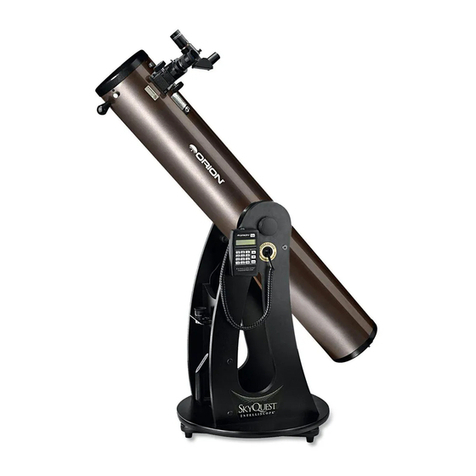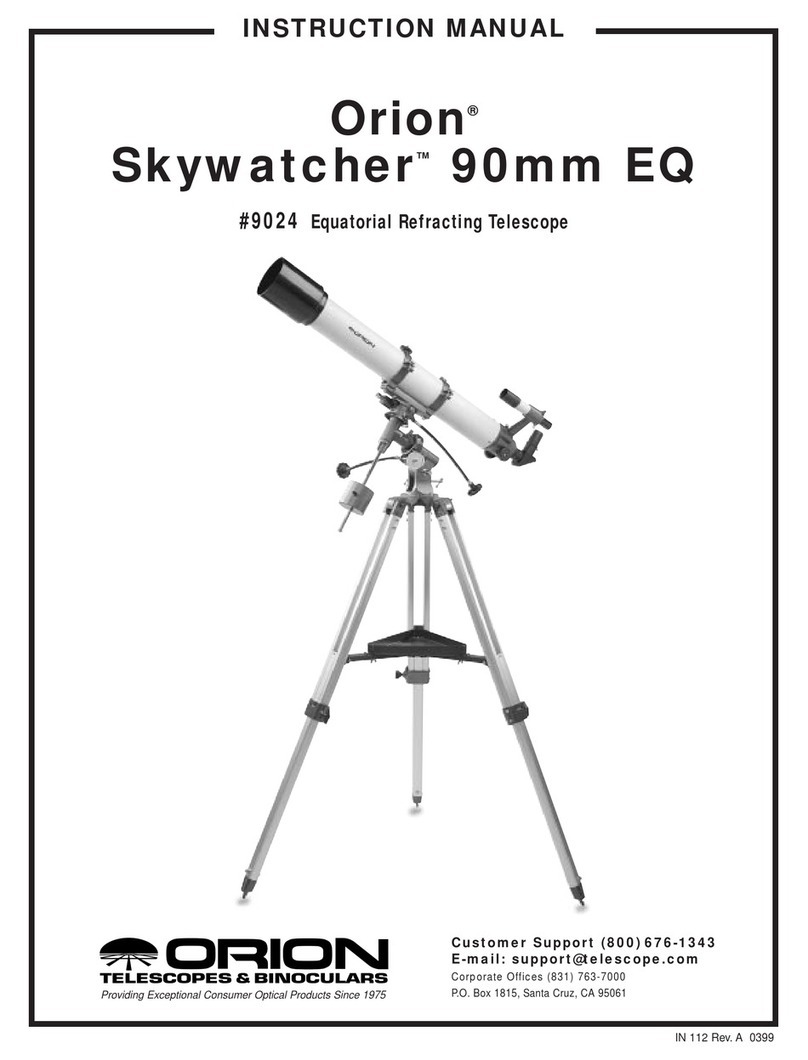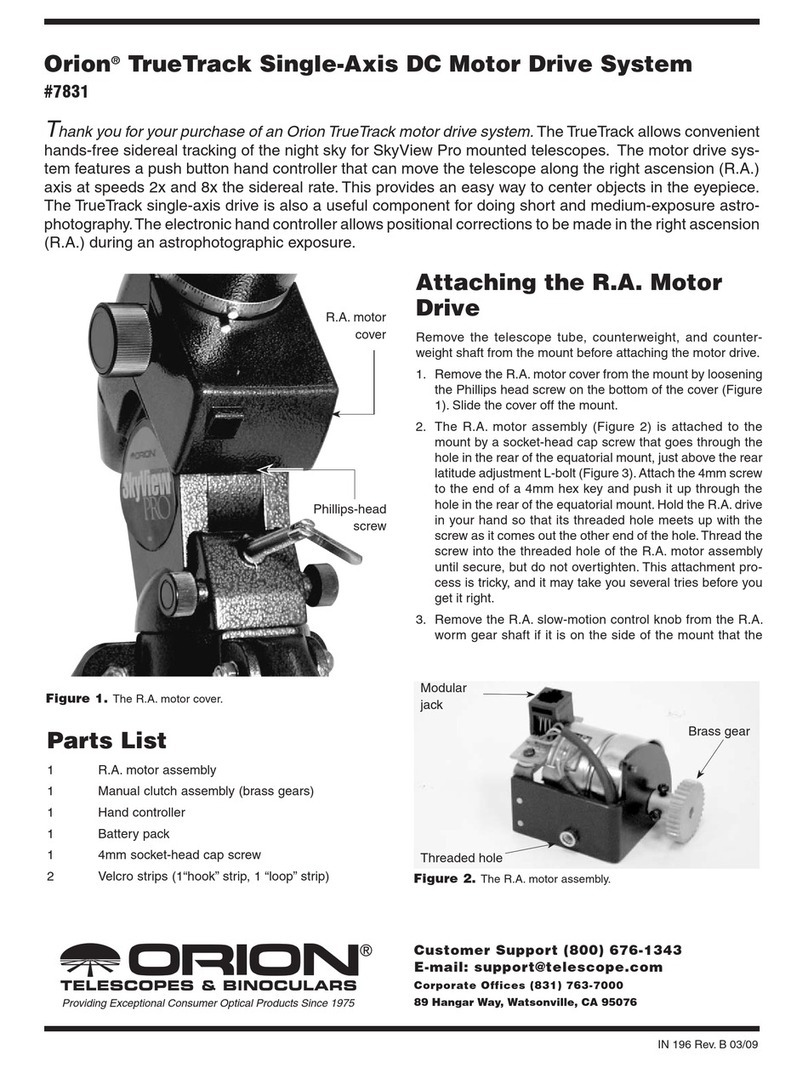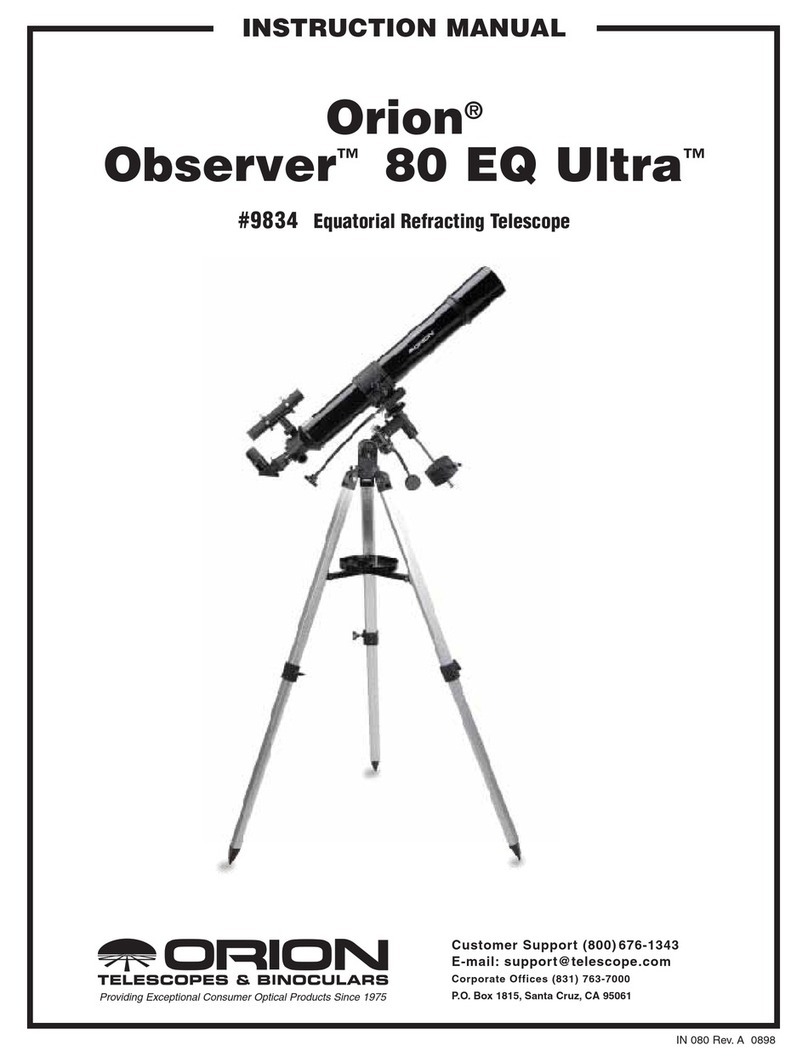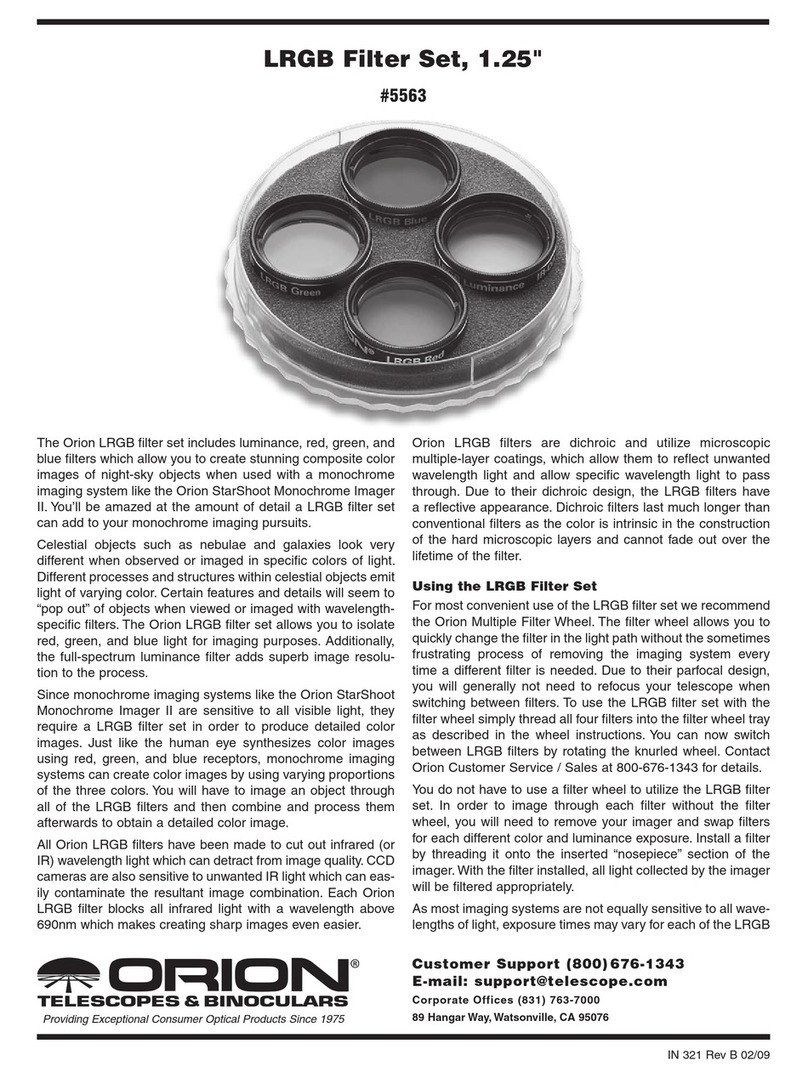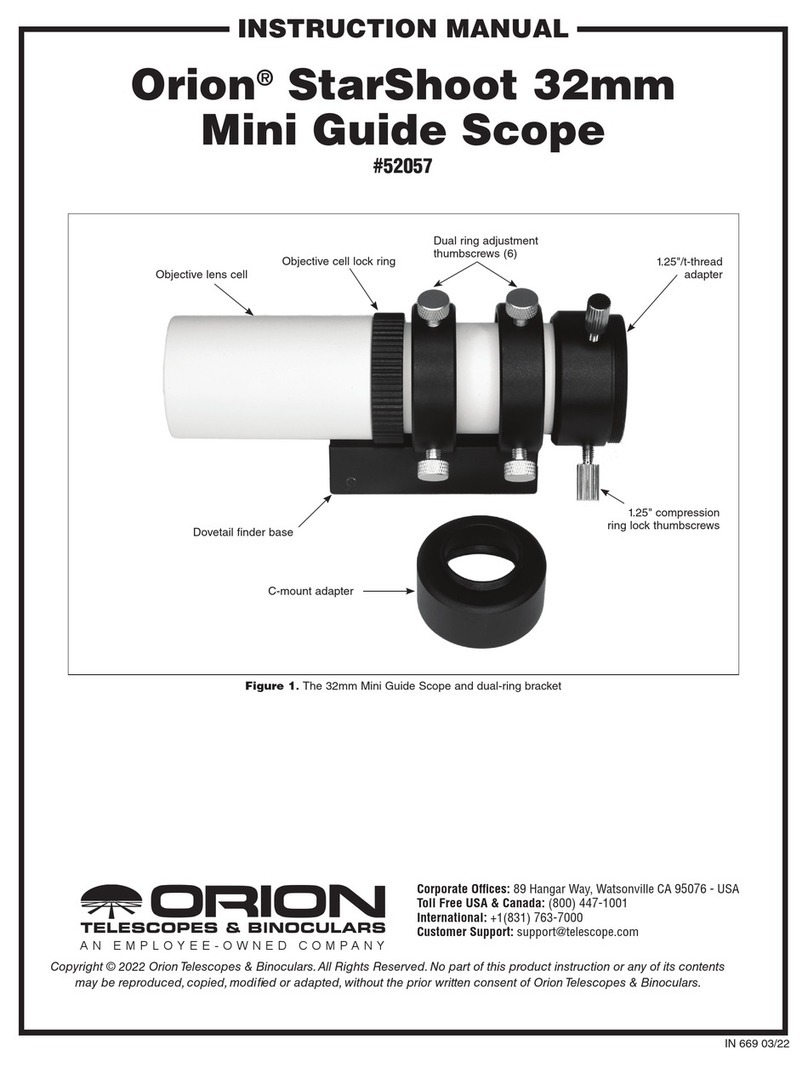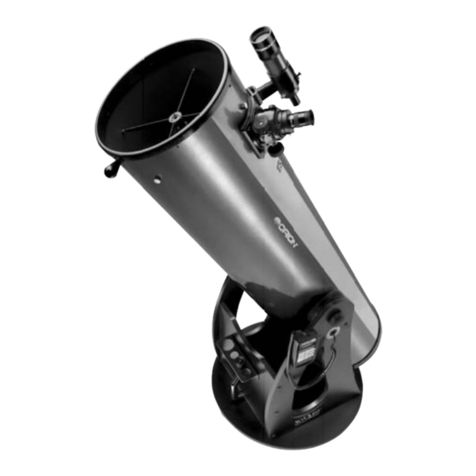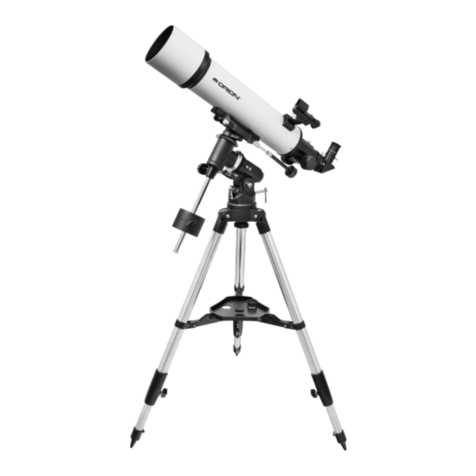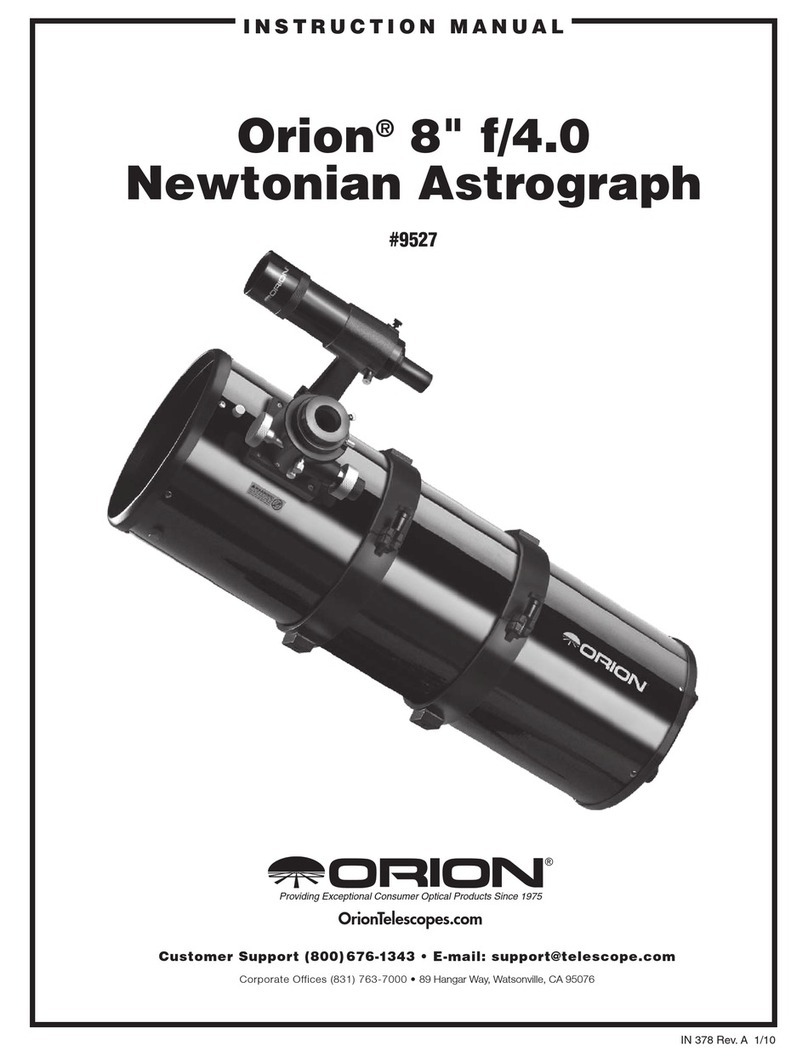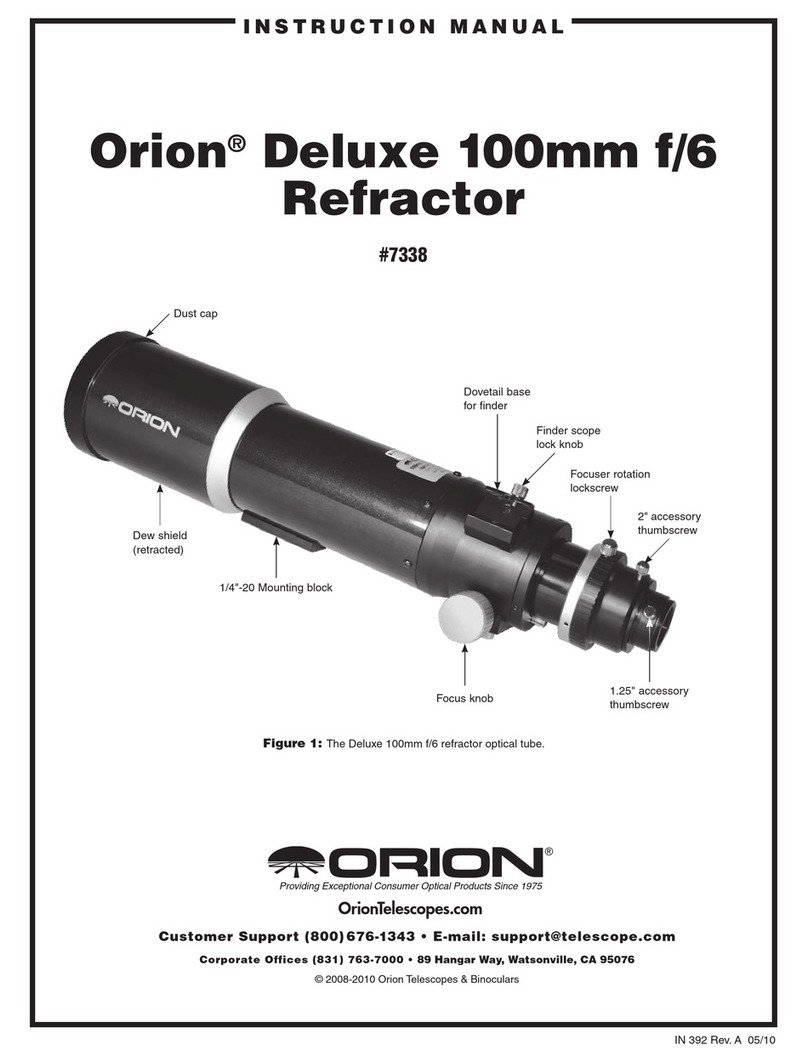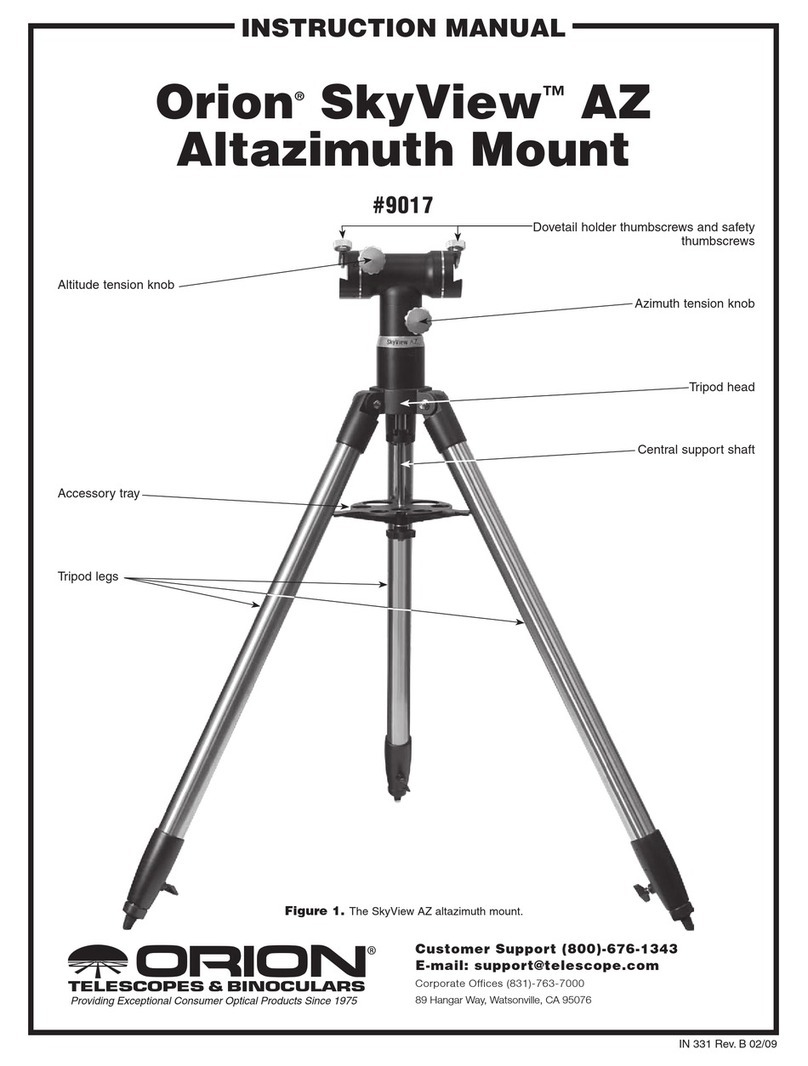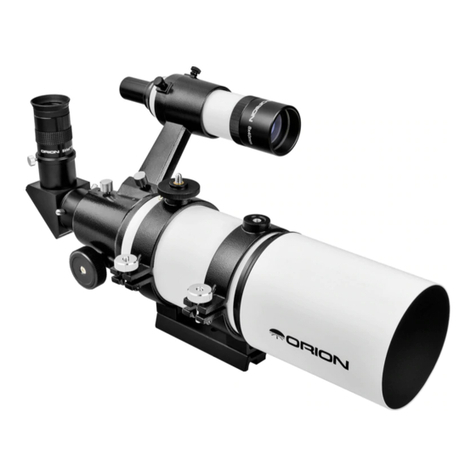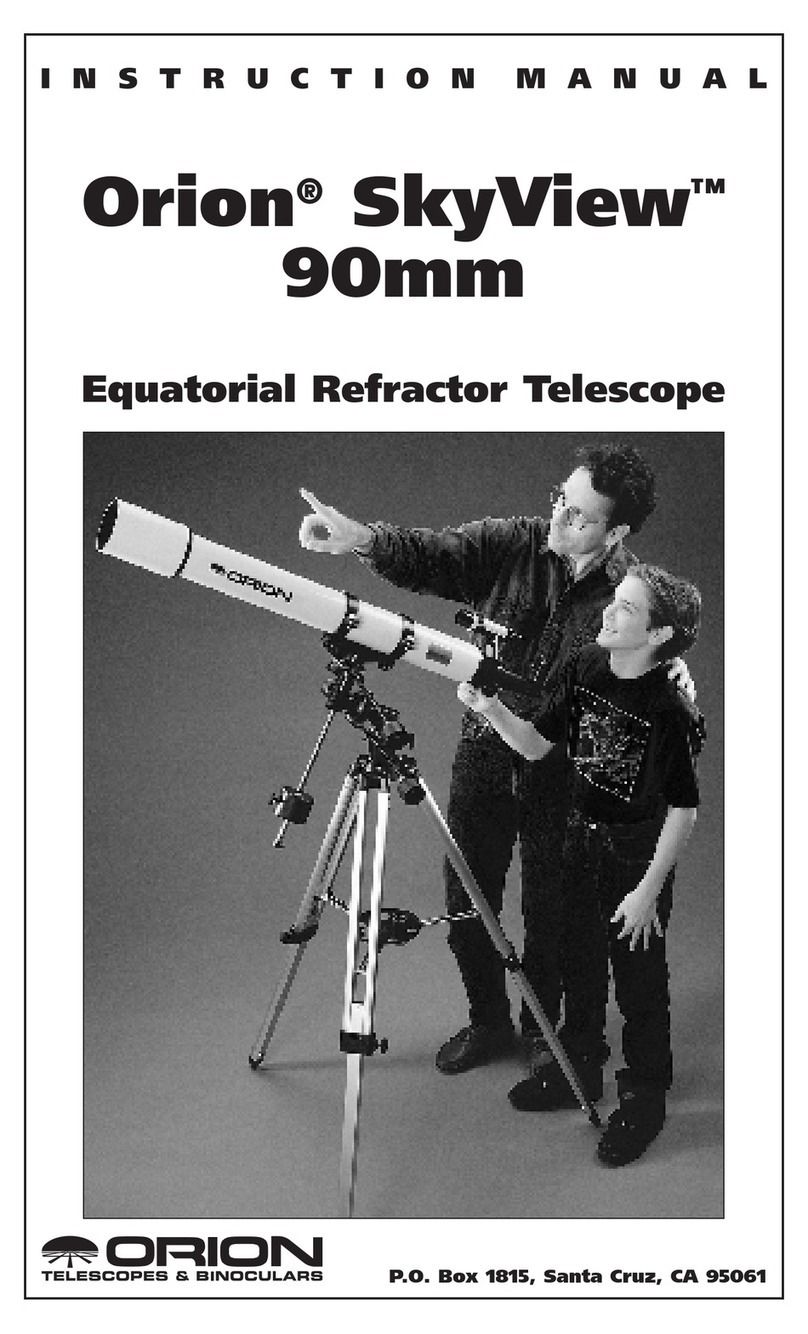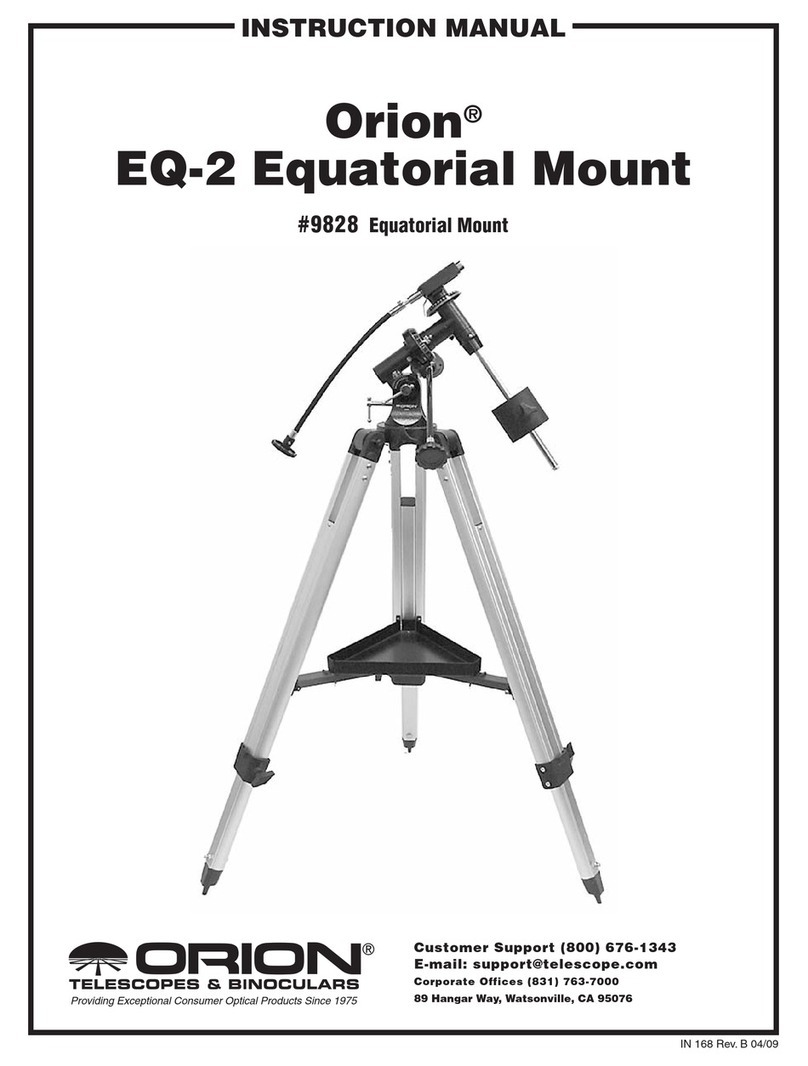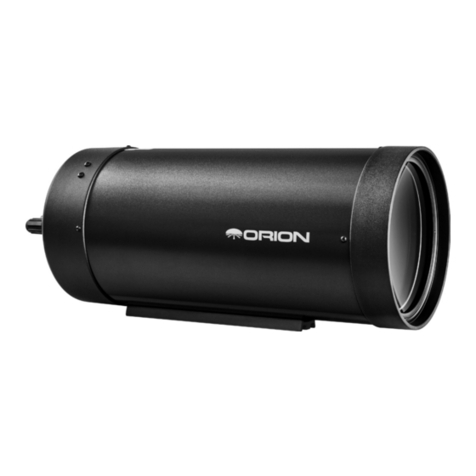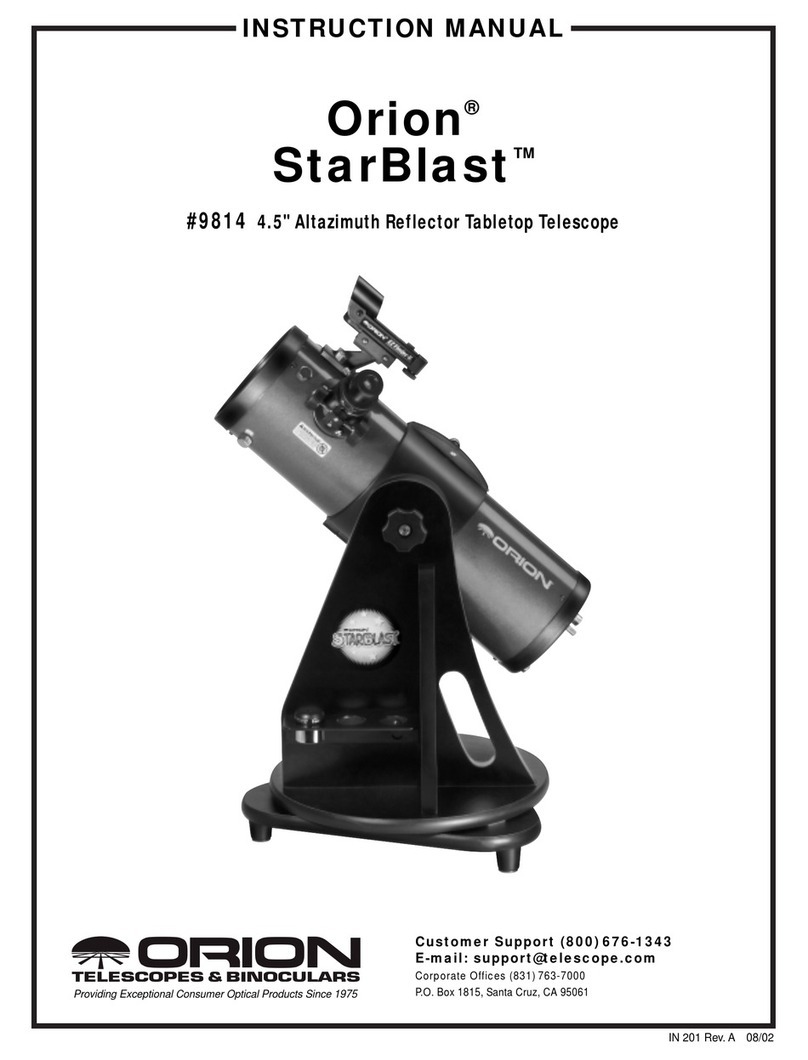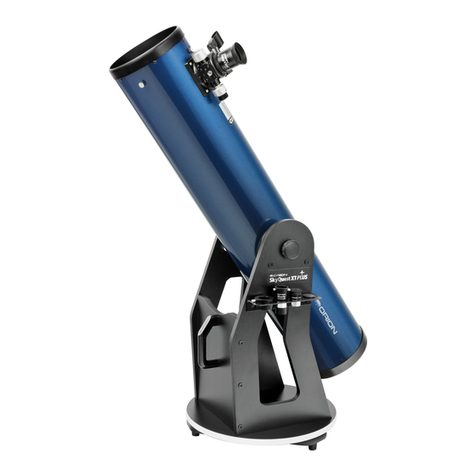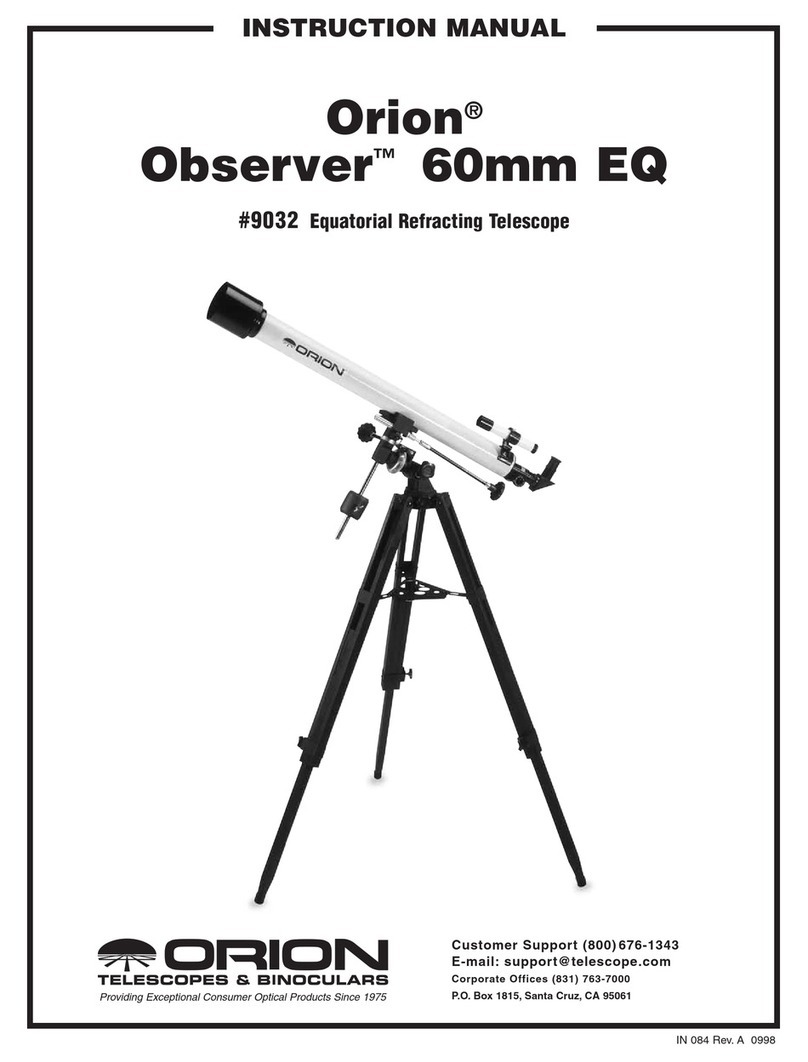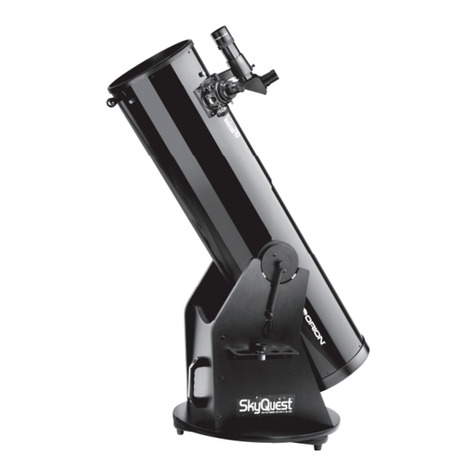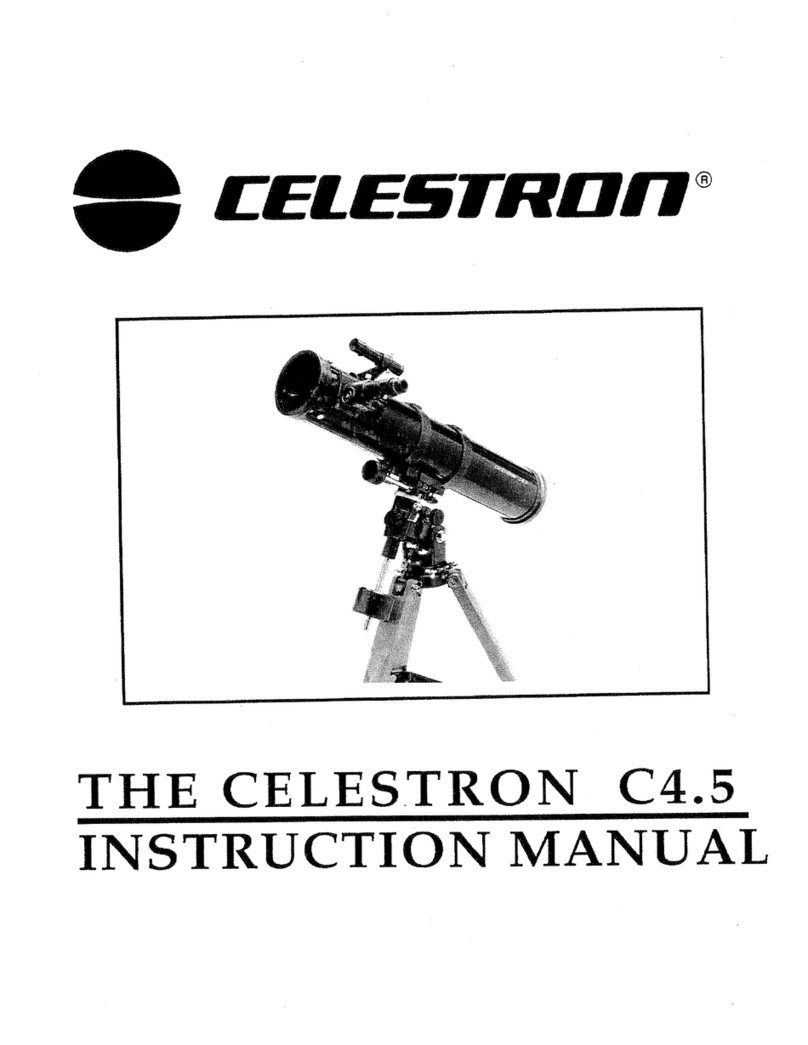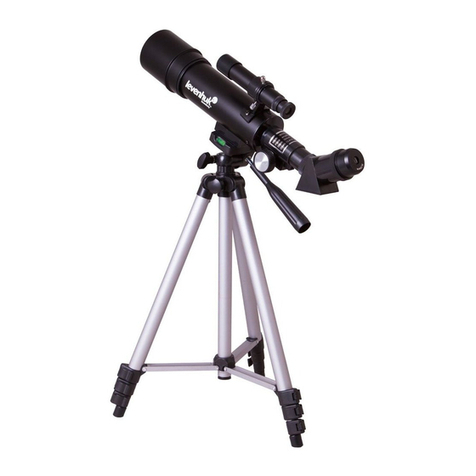8
so that only fine adjustment of the MF70’s adjustment screws will be needed to
center it on the FOV. Otherwise you’ll have to make coarser adjustments to the
MF70’s adjustment screws to redirect the aim of the MF70.
The best method for adjusting the aim is to loosen one of the adjustment screws
while tightening another adjustment screw.
Once the target object is centered in the FOV of the Multi-Finder, look again
in the telescope’s eyepiece and see if it is still centered there as well. If it isn’t,
repeat the entire process, making sure not to move the telescope while adjusting
the alignment of the finder scope.
When the target object is centered on the FOV of the MF70 and in the tele-
scope’s eyepiece, the MF70 is aligned and ready to be used for locating objects.
Make sure all the adjustment screws are now locked down tightly so that the
MF70’s aim will stay the same as the telescope moves from target to target.
The Multi-Finder alignment should be checked before every observing session.
This can easily be done at night, before viewing through the telescope. Choose
any bright star or planet, center the object in the telescope eyepiece, and then
adjust the bracket’s adjustment screws until the star or planet is also centered in
the MF70’s FOV.
The MF70 and bracket can be removed from the dovetail base for storage, and
then reinstalled without significantly changing the Multi-Finder’s alignment.
Warning: Never look directly at the Sun with the naked eye or with a telescope
– unless you have a proper solar filter installed over the front of the telescope!
Otherwise, permanent, irreversible eye damage may result.
Caring for the Finder Scope
If you give your Multi-Finder reasonable care, it will last a lifetime. Keep the dust
cap on the finder when it is not in use. If you plan to move your telescope any
significant distance, you should remove the Multi-Finder and bracket in order to
prevent them from getting bumped. You can store the Multi-Finder in any small
padded case to protect it from damage.
Cleaning Lenses
Any quality optical lens cleaning tissue and optical lens cleaning fluid specifically
designed for multi-coated optics can be used to clean the exposed lenses of
your finder scope. Never use regular glass cleaner or cleaning fluid designed for
eyeglasses. Before cleaning with fluid and tissue, blow any loose particles off the
lens with a blower bulb or compressed air. Then apply some cleaning fluid to a
tissue, never directly on the optics. Wipe the lens gently in a circular motion, then
remove any excess fluid with a fresh lens tissue. Oily fingerprints and smudges
may be removed using this method. Use caution; rubbing too hard may scratch
the lens. For larger lenses, clean only a small area at a time.
